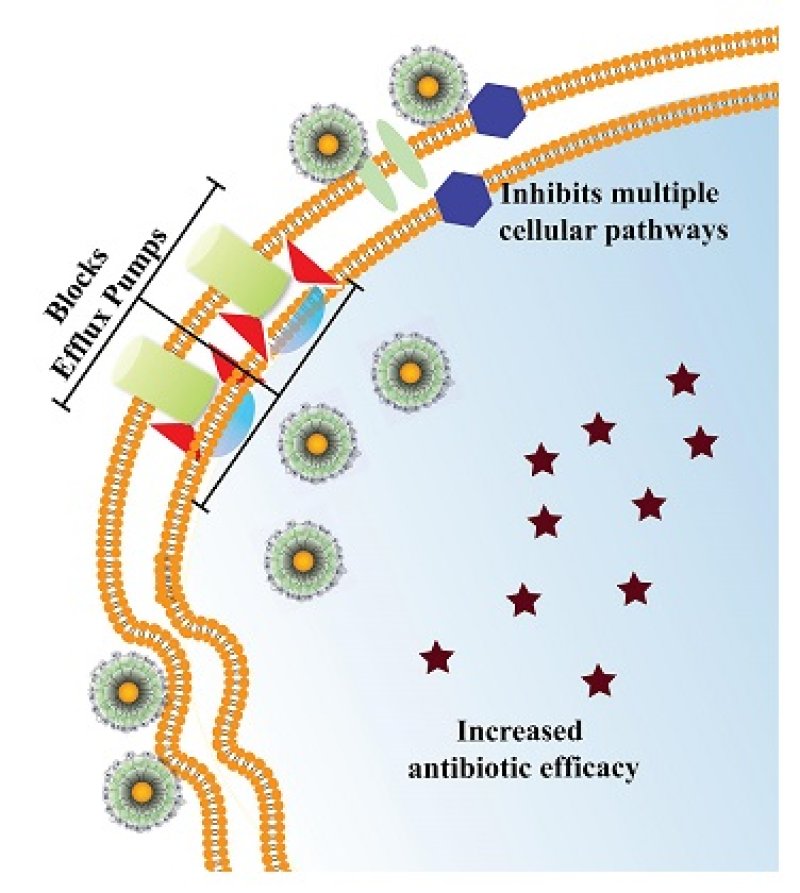By 2050 more people may die from microbial infection than cancer, according to current estimates. The increasing mortal threat from microorganisms stems from their ability to evolve a resistance to the antibiotic drugs that have so effectively fought infections over the past 100 years. While nanomaterials have emerged as a possible alternative antibacterial strategy, their activity lacks the specificity of drugs. Now studies of the synergy between the action of nanomaterials and the action of drugs suggest that the combination may be much more powerful than the sum of its parts.
Nanomaterials tend to lyse cell membranes indiscriminately. While there has been some recent progress in tuning nanomaterial systems to preferentially kill bacterial versus mammalian cells, the action of drugs is inherently specific because they target “specific” pathways. Rotello and his team had been looking for a way of improving the specificity of the microbial action of nanoparticles by combining them with drugs, and instead found that the nanoparticles shut down altogether the main strategy bacteria use to resist drug action. Using the two together could prevent the development of bacterial resistance and improve the efficacy of drugs by up to a factor of 16.
The GLP aggregated and excerpted this blog/article to reflect the diversity of news, opinion, and analysis. Read full, original post: Nanoparticles resurrect antibacterial drugs































